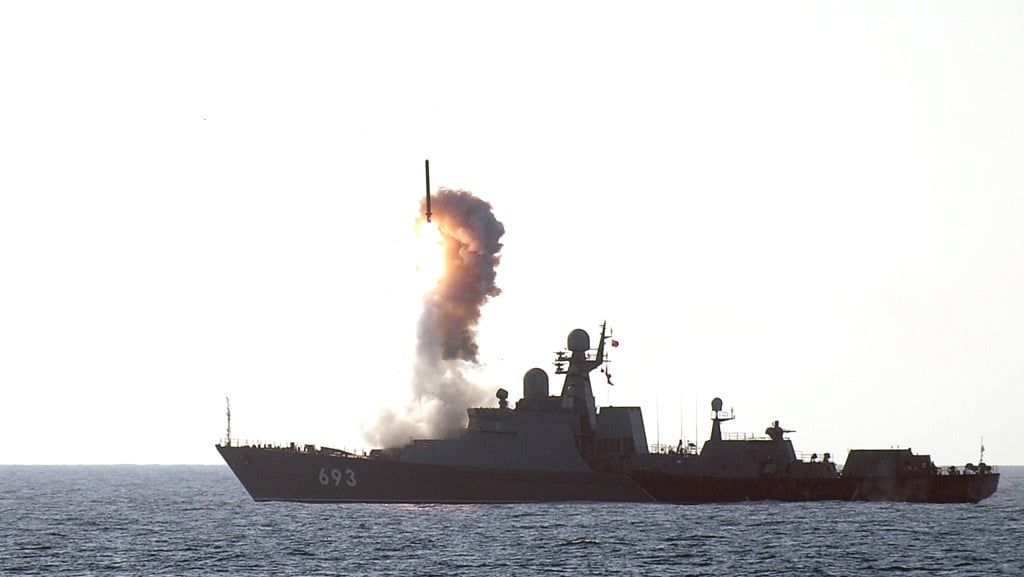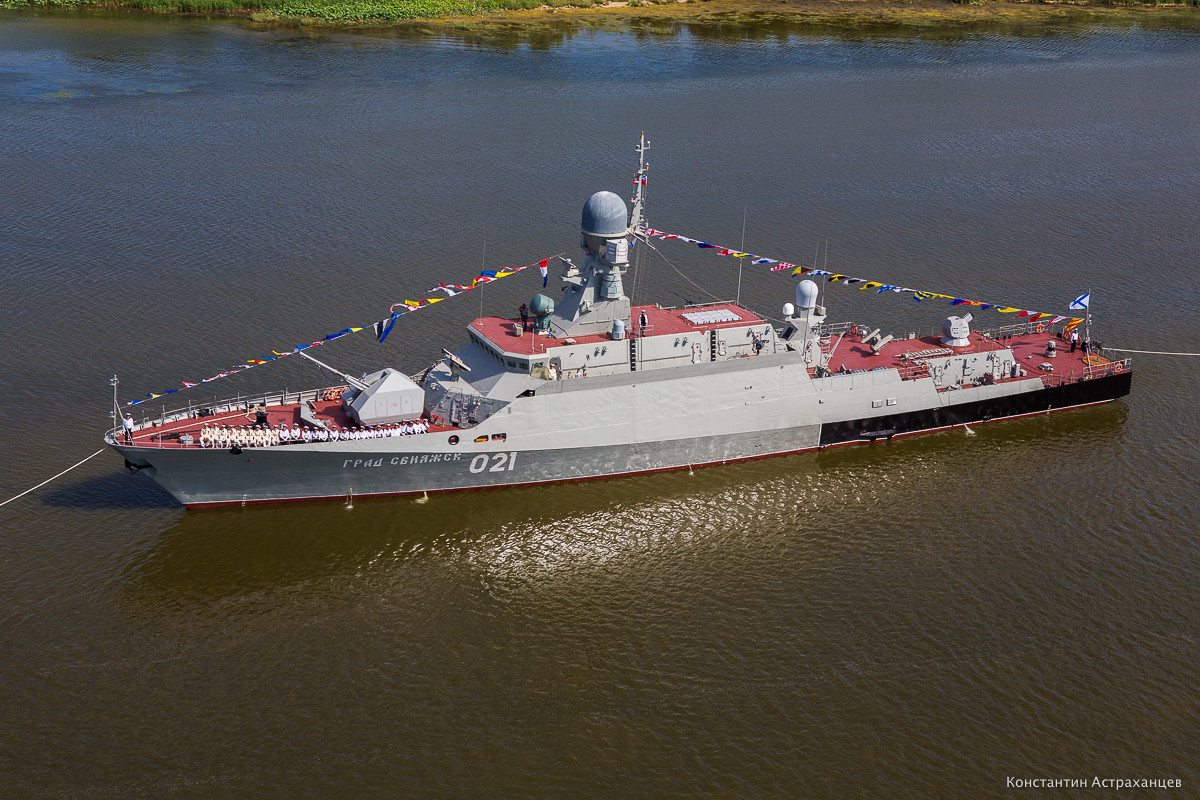
Russian officials claim that a flotilla of four ships in the Caspian Sea sent a barrage of 26 guided cruise missiles across Iran and Iraq to strike Islamic State in Iraq and Syria (ISIS) targets in Syria — more than 900 miles away.
Those claims were bolstered on Wednesday when Kurdish Peshmerga forces fighting ISIS released a video on Twitter showing a guided cruise missile streak by their encampment.
Russian missiles pass in sky of #Kurdistan heading to Syria for the bombing of the headquarters of Syrian opposition pic.twitter.com/SA6SPZB20E
— Peshmerga (@KURDISTAN_ARMY) October 7, 2015
According to a Wednesday release from the Russian Ministry of Defense, three 1,000-ton Buyan-M corvettes and the 2,000-ton guided missile frigate Dagestan fired the SS-N-30A cruise missiles from ships to target sets including “plants producing ammunition and explosives, command centers, storages of munitions, armament and POL as well as a training camp of terrorists on the territory of the Raqqah, Idlib and Aleppo provinces,” according to the statement.
The Peshmerga video shows two subsonic cruise missiles that correspond to the characteristics of the SS-N-30A.
The Russian Foreign Ministry released its own video combining footage of the ships launching weapons and map of the alleged flight path of the missiles to central Syria at a distance of more than 900 miles for the sub-sonic SS-N-30As or Kalibr NK or 3M-14T.
Officials with the Office of the Secretary of Defense (OSD) and the U.S. Central Command would not confirm any of the Russian claims surrounding the strikes and independent verification of the strikes have not been forth coming.
In addition to the distance the missiles would have had to travel, taking the Russians at their word, the missiles would have to transit through Iranian, Iraqi and Syrian airspace to reach their targets.
Moving that many missiles through that airspace would require a major deconfliction with the air defense systems and aircraft in Iraq and Iran, said Bryan Clark , a retired Navy officer, the former special assistant to the Chief of Naval Operations (CNO) and now a senior fellow at the Center for Strategic and Budgetary Analysis (CSBA).
“If they actually did this, that’s a huge step forward in their ability to coordinate theater wide operations that they haven’t demonstrated in decades,” Clark told USNI News on Wednesday.
If ultimately confirmed, the ability for the Russians to launch a strike from that far is also revelatory Eric Wertheim — naval analyst and author of U.S. Naval Institute’s Combat Fleets of the World — told USNI News on Wednesday.

Russian possession of a weapon that parallels the range and performance of the Raytheon Tomahawk Land Attack Missile (TLAM) — the U.S. long range land attack missile — shows “the rest of the world is catching up to this technology,” Wertheim said.
“It’s a wake up call.”
In addition to a statement of the effectiveness of Russian technology the strike on the targets, which could have just as easily been undertaken by the forward deployed Russian aircraft, have a messaging component, Steven Horrell, the U.S. Navy senior fellow at The Atlantic Council told USNI News.
“Regardless of whatever tactical value, this is clear messaging to the U.S. and NATO,” he said.
“It’s possible this is specifically a message to Turkey with recent friction over airspace on the border.”
Launching from the Caspian Sea, rather than from the Black Sea-based surface action group, currently in the Eastern Mediterranean, also shows the the seams in the abilities of the Russian surface fleet.
The Buyan-M corvettes and Dagestan are among the more modern surface combatants in the Russian fleet and are equipped UKSK vertical launch system capable of fielding the long-range cruise missile. Ships of the Black Sea SAG are incapable of fielding the more modern weapons as Russia has elected not to modernize the ships.
However, the Russian Navy is expanding platforms with the cruise missiles.
“In addition to the Caspian Sea, this capability is in the Black Sea on the Improved-Kilo-class submarine Novorossiysk which just arrived last month and in the Baltic Fleet on their newer frigates,” Horrell said.
The following is the complete Oct. 7, 2015 statement from the Russian Ministry of Defense on the missile strikes from Caspian Sea.
This night the ship strike group of the Russian Navy launched cruise missiles against ISIS infrastructural facilities in Syria from the assigned district of the Caspian Sea.
The cruise missiles hit all the assigned targets. The deviation from aims during the long-range engagement did not exceed 3 meters.
Plants producing ammunition and explosives, command centres, storages of munitions, armament and POL as well as a training camp of terrorists on the territory of the Raqqah, Idlib and Aleppo provinces were engaged.
The missile ship Dagestan (project 11661) was the flag ship of the ship strike group. Its displacement constitutes about 2 000 tons, its length is about 200 meters. The ship is equipped with a modern high-accuracy missile system Kalibr NK capable of engaging targets by cruise missiles located on all the territory of Syria with the accuracy of up to 3 meters. The cruise missiles fly at the altitudes of up to 50 meters following the terrain.
The missile ship Dagestan is capable of task performance at the distance of 4 000 km from the permanent base.
The displacement of small-sized missile ships Grad Sviyazhsk, Uglich, Veliky Ustyug (project 21631) is 1 000 tons, their length is over 70 meters. The main strike weapon of the ships of this type is the Kalibr NK high-precision ship missile system, which allows to engage targets day and night in bad hydrometeorological conditions.





